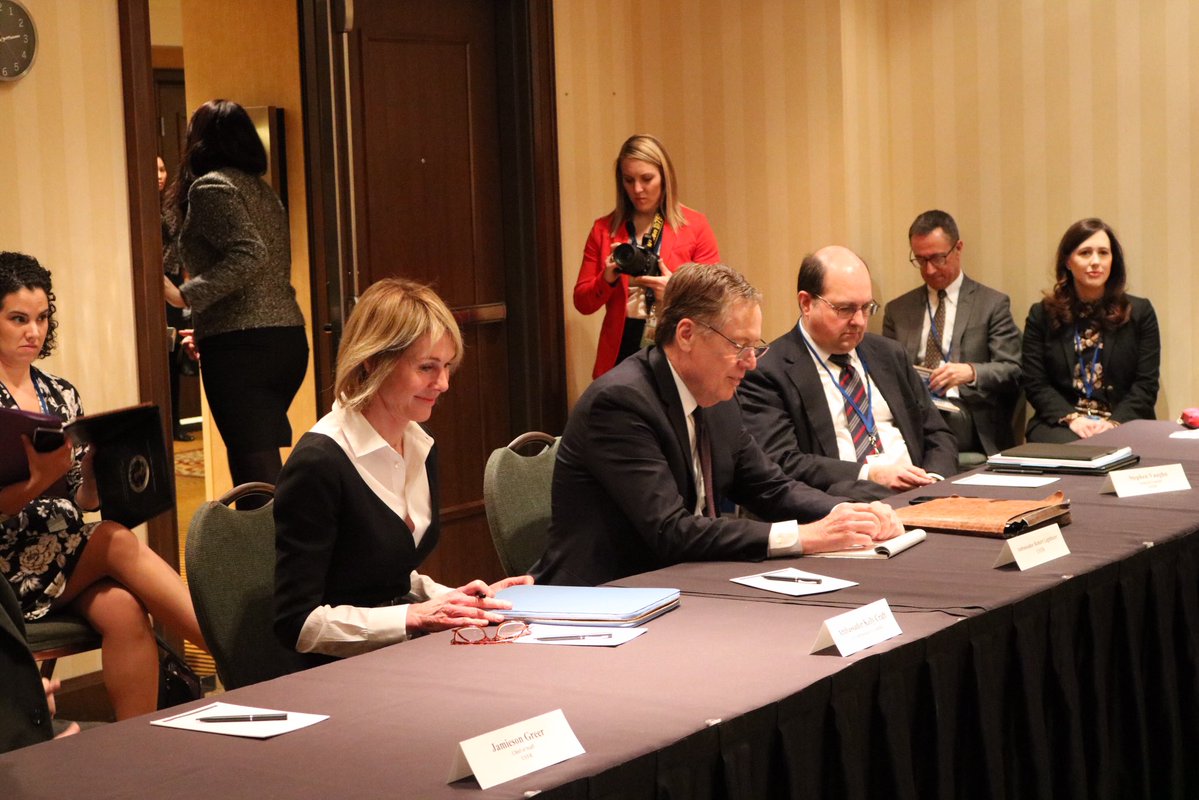
MONTREAL—The NAFTA renegotiation has survived a key round of talks, with the United States expressing some annoyance but hailing modest progress, promising future rounds, describing the trade pact as important and toning down the imminent withdrawal threats.
The week-long round concluded Monday with the U.S. trade czar sharing the widespread assessment of others that the latest talks marked the first concrete examples of constructive dialogue on hot-button issues.
The talks are now scheduled to continue for at least two more months, with rounds scheduled for Mexico City and Washington, before policy-makers confront a major dilemma: what to do during the spring, summer and fall as Mexico and the U.S. hold national elections.
Robert Lighthizer expressed myriad frustrations Monday. The U.S. trade representative said he was unsatisfied with Canadian proposals on autos, calling the progress too slow, dismissing another Canadian idea as a “poison pill” and bemoaning a Canadian complaint to the World Trade Organization, a tactic he characterized as a “massive attack” against the U.S. trading system.
On balance, however, he sounded like a man willing to give NAFTA a chance.
“Some real headway was made here,” Lighthizer said.
“The United States views NAFTA as a very important agreement. We’re committed to moving forward. I am hopeful progress will accelerate soon. We’ll work very hard between now and the beginning of the next round — and we hope for major breakthroughs in that period. We will engage both Mexico and Canada urgently, and we will go where these negotiations take us.”
With just eight weeks left in the current schedule of talks, unfolding under President Donald Trump’s persistent threats to blow up the deal, the U.S. administration has important decisions to make about NAFTA’s future.
The Montreal round represented a new phase for the negotiations. It included a first significant back-and-forth dialogue on autos and other major sticking points. Sources say there were three hours of talks over two days about the autos proposal.
Lighthizer’s long-awaited verdict on the latest talks came at a public event alongside Foreign Affairs Minister Chrystia Freeland and Ildefonso Guajardo of Mexico. The three held a series of face-to-face bilateral meetings before their final closed-door, three-way huddle.
It was the first such group appearance since the trio’s memorably tense encounter in the fall.
Numerous participants in the Montreal round were sounding cautiously optimistic in the lead-up to Monday’s closing statements, calling the latest talks less negative and more constructive than initial ones, with the first true dialogue on serious sticking points — autos, dispute resolution and a five-year review clause in particular.
And there was the political dynamic: Freeland and Lighthizer went to great lengths to dispel the notion that the two don’t actually like each other — an impression created by frosty body language and rhetoric the last time the two shared the NAFTA stage last fall.
Lighthizer described his counterparts as friends. He also shared fond memories of vacationing in the Montreal area with his family. Freeland was asked whether her relations with her U.S. counterpart might derail the talks and offered a one-word reply: “No.”
“Without being overly optimistic, I am heartened by the progress,” Freeland said, citing the closing of an anti-corruption chapter and other constructive conversations.
The U.S. statement was being closely parsed.
Lighthizer rejected the newest proposals as presented, and even disparaged some of them. He was especially scathing in an aside apparently referring to trade in services, where Canada suggested a protectionist measure in response to a protectionist U.S. proposal.
“If the United States had made (this proposal),” he said, “(it) would be dubbed a ‘poison pill.”’
But one prominent stakeholder expressed little concern over the grumpier snippets from Lighthizer’s appearance. Flavio Volpe of the Canadian Auto Parts Manufacturers Association cast the U.S. representative’s reaction as purely tactical.
“I think he’s a good negotiator,” Volpe said.
“I don’t really take a lot of the stuff at face value. But it’s important for us to understand the sentiment. And the sentiment is, ‘We’re not satisfied, we’re not going to put our guard down, and we’ll see you in four weeks.”’
The Canadian Chamber of Commerce also offered a mostly optimistic take on Monday’s events. President Perrin Beatty said he was encouraged by the progress reported, but tempered that by saying: “The work is far from over … and there is still no guarantee of success.”